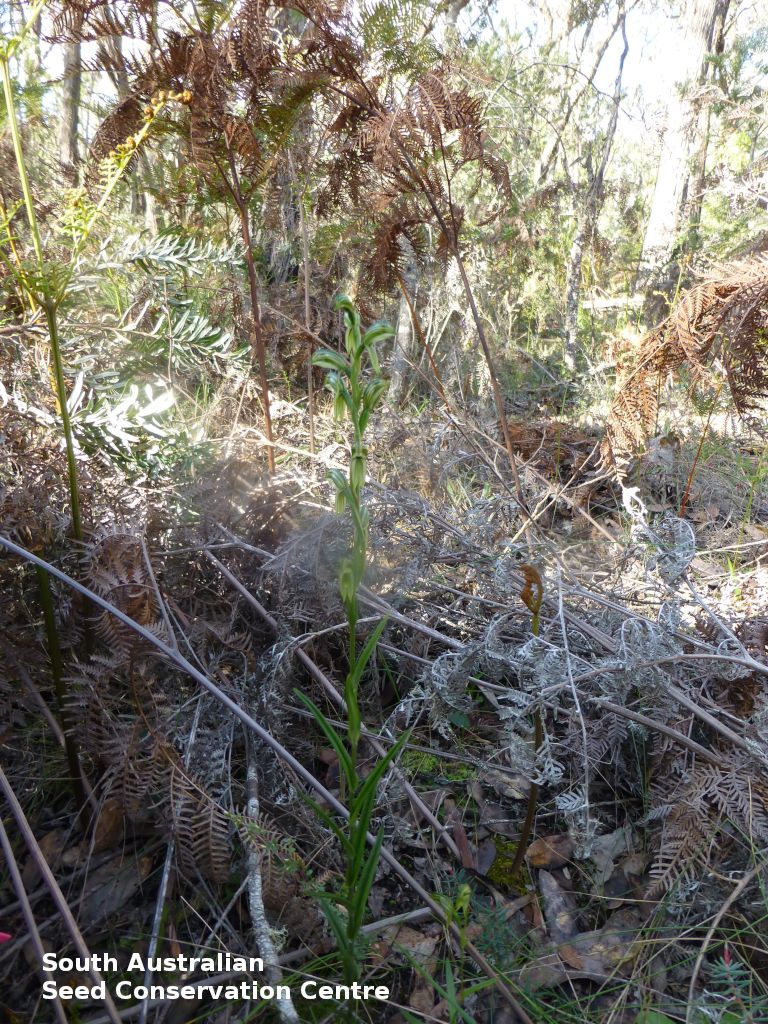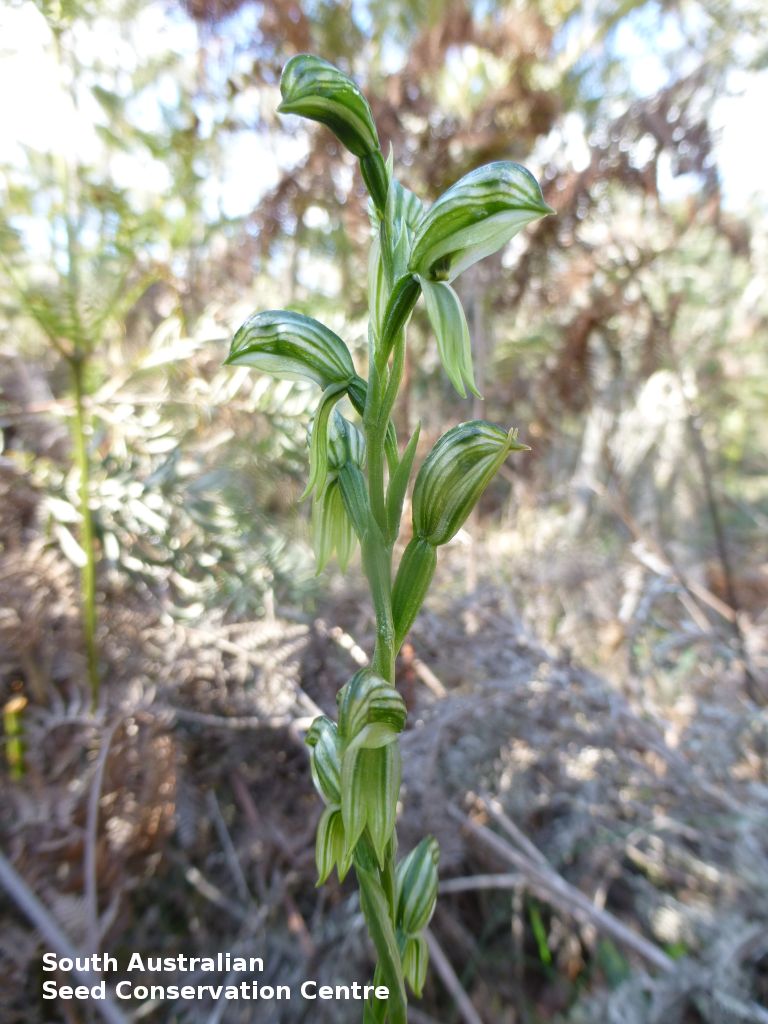






Botanical art
Prior names
Bunochilus chlorogrammus
Pterostylis longifolia, partly
Etymology
Pterostylis from the Greek ‘pteron’ meaning a wing and ‘stylis’ meaning a style or column, referring to the prominent wings found at the top of the column in all species. Chlorogramma from the Greek 'chloros' meaning green and 'gramme' meaning lined, referring to the deep green line on the labellum of the species.
Distribution and status
Found in the lower South-east in south Australia, growing in moist well drained soils in open forest and woodland. Also found in Victoria. Native. Very rare in South Australia. Rare in Victoria. Vulnerable in Australia under the EPBC Act.
Herbarium region: South Eastern
NRM region: South East
AVH map: SA distribution map (external link)
Plant description
Annual terrestrial orchid growing from an underground tuber to 45 cm tall. Sterile plants form a basal rosette of 3-6 ovate leaves. On flowering plants 5-9 dark green lance-shaped leaves are present on the stem, each to 6 cm long. Inflorescence a green stem with 1-7 translucent green with dark green stripes flowers. Dorsal sepal with short apical point, lateral sepals deflexed, conjoined part oblong, petals slightly falcate, with a well-developed basal flange. Labellum oblong, emerald green (rarely brownish) with two short upturned hooks at the apex. Flowering between July and September. Fruits are brown papery ellipsoid capsule. Seeds are very small brown long ellipsoid seed with a translucent brown mesh-like covering.
Seed collection and propagation
Collect seeds between September and November. Collect fat capsules as they start to dry and turn brown. Pods will split and release the seeds quickly and will require monitoring. To increase the chances of collecting mature pods, it is recommended that a small breathable bag (ie. Organza bags) be used to enclose the developing capsules. Place the capsules in a container that will hold fine seeds and leave to dry for a few weeks or until the capsule split. Then carefully hold the capsule and tap it gently to release the seeds. Store the seeds with a desiccant such as dried silica beads or dry rice, in an air tight container in a cool and dry place, refrigerator or in liquid nitrogen. For the NVC South East Orchid Project one population consisting of more than 6 individuals was recorded from the Nangwarry area. Approximately 9,000 seeds (0.01 g) were banked from this population. Seed viability was 72%. Seed germination in Pterostylis species is difficult in the absence of symbiotic mycorrhizal fungi.
| Location | No. of seeds (weight grams) | Number of plants | Date collected | Collection number Collection location | Date stored | % Viability | Storage temperature |
|---|---|---|---|---|---|---|---|
| BGA | 9,000 (0.011 g) | 6 | 26-Sep-2013 | DJD2760 South Eastern | 1-Nov-2016 | 70% | -80°C |
Number of plants: This is the number of plants from which the seeds were collected.
Collection location: The Herbarium of South Australia's region name.
% Viability: Percentage of filled healthy seeds determined by a cut test or x-ray.